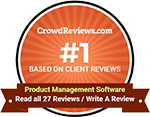Enter eCommerce ERP (Enterprise Resource Planning), the seamless integration of your eCommerce system with a modern, cloud-based ERP solution.
Whether you’re a business-to-business (B2B), business-to-consumer (B2C), or direct-to-consumer (D2C) eCommerce retailer, you have one goal: to grow your business. However, as your business grows, so too does the complexity of your operations. Where once QuickBooks could handle your accounting, Salesforce could handle your customer relationship management (CRM), and SkuVault could handle your inventory management, you now require more than these disconnected, siloed solutions can provide.
Enter eCommerce ERP (Enterprise Resource Planning), the seamless integration of your eCommerce system with a modern, cloud-based ERP solution. Together, they extend your organization’s breadth and depth, connecting your processes and procedures for a cohesive, future-proofed operation.
To understand how an ERP and eCommerce integration works, you must first start with eCommerce logistics, which includes taking and fulfilling orders, processing payments, handling returns, managing inventory, ensuring security, calculating taxes, tracking financials, and providing customer support. These become harder to juggle when your small operation (perhaps you started in your garage) morphs into a full-fledged operation with a warehouse—or two, or three—a shipping fleet, and multiple employees.
Relying on systems that have been cobbled together, making them function by sheer determination and willpower, will no longer work. Everyone will suffer from a lack of data, consistency, and control. Thankfully, you can integrate your eCommerce software solutions with a modern ERP, automating your current procedures and processes (a.k.a becoming more efficient), and successfully avoiding additional data challenges in the future.
 1912 Ratings
1912 Ratings































